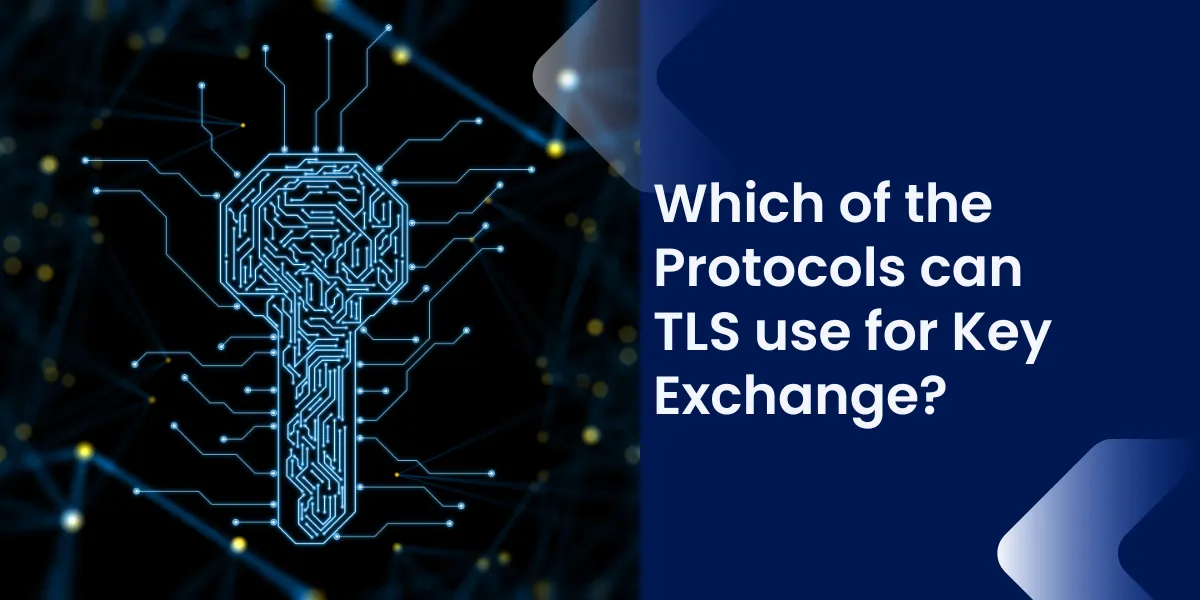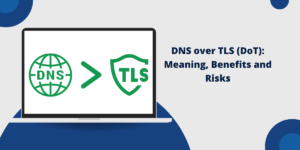What is Key Exchange in TLS?
Key Exchange in TLS is a security process that allows two parties to create a shared secret key over an unsecure network. This process happens during the TLS handshake. The most common methods are RSA and Diffie-Hellman. In RSA, the client encrypts a random number with the server’s public key. In Diffie-Hellman, both parties use mathematical calculations to generate the same key independently. This shared secret key enables secure data transmission between client and server. The key exchange ensures that even if someone intercepts the communication, they cannot access the encrypted data without the key.
The big question is, which protocols does TLS use for key exchange? Let’s break it down in a way that’s easy to understand, with this actionable insights.
Why Key Exchange Is Crucial in TLS?
The key exchange in TLS is like sharing a secret handshake in a crowded room—only the right people can use it to communicate securely. Without a secure key exchange, the confidentiality and integrity of data are at risk. This is why TLS uses specific protocols to establish safe encryption keys. These keys protect sensitive information from prying eyes, including passwords, credit card details, and personal data.
What is the Role of Key Exchange in Securing Data
When a user connects to a website using HTTPS, the first step is the TLS handshake. This process involves:
- Authenticating the server (and optionally the client).
- Establishing a shared encryption key for secure communication.
- Ensuring that the connection is tamper-proof.
The key exchange protocols determine how this shared key is securely established.
What are the Key Exchange Protocols Used by TLS
TLS supports multiple protocols for key exchange, each with strengths and use cases.
Here are the key players:
- RSA (Rivest-Shamir-Adleman)
- DH (Diffie-Hellman) Key Exchange
- ECDH (Elliptic Curve Diffie-Hellman)
- PSK (Pre-Shared Key)
- Secure Remote Password (SRP)
- QUIC (Quick UDP Internet Connections)
RSA (Rivest-Shamir-Adleman)
RSA is one of the oldest and most widely recognized public-key cryptography algorithms. It was a go-to method in early versions of SSL and TLS (like TLS 1.0 and 1.1) for both key exchange and authentication.
- How It Works: RSA relies on the mathematical difficulty of factoring large prime numbers. The server uses its private key to decrypt a pre-master secret sent by the client, generating the session key.
- Pros: Simple and reliable.
- Cons: Vulnerable to specific attacks (e.g., “Logjam” and advancements in quantum computing) and not forward-secure.
- Current Status: RSA is being phased out for more secure options like Diffie-Hellman.
DH (Diffie-Hellman) Key Exchange
Diffie-Hellman is a pioneering key exchange algorithm allowing two parties to generate a secret over an insecure channel.
- How It Works: Both parties exchange public components and use their private keys to compute the shared secret.
- Variants:
- Static DH: Uses fixed keys, which are less secure.
- Ephemeral DH (DHE): Generates a new key pair for every session, providing forward secrecy.
- Pros: Enables forward secrecy (DHE variant).
- Cons: Computationally intensive compared to RSA.
- Current Status: Widely supported in TLS as DHE.
ECDH (Elliptic Curve Diffie-Hellman)
ECDH is a modern version of Diffie-Hellman that uses elliptic curve cryptography (ECC). It’s faster and more secure than traditional DH.
- How It Works: Similar to DH, it operates on elliptic curves, requiring smaller key sizes for the same security level.
- Variants:
- Static ECDH: Less typical due to lower security.
- Ephemeral ECDH (ECDHE): Provides forward secrecy and is widely used.
- Pros: Highly efficient and secure.
- Cons: Requires more complex implementation.
- Current Status: ECDHE is the most commonly used method in modern TLS implementations.
PSK (Pre-Shared Key)
PSK is a more straightforward approach where both parties share a secret key beforehand.
- How It Works: The key is manually exchanged or distributed securely before the TLS session begins.
- Pros: Fast and reduces computational overhead.
- Cons: Requires secure key distribution in advance, limiting scalability.
- Current Status: Used in specialized environments like IoT and embedded systems.
Secure Remote Password (SRP)
SRP is a password-based key exchange method to prevent eavesdropping and man-in-the-middle attacks.
- How It Works: Combines password authentication with key exchange in one step.
- Pros: Strong resistance to password-related attacks.
- Cons: Less common in general TLS use cases.
- Current Status: Rarely used in mainstream TLS implementations.
QUIC (Quick UDP Internet Connections)
While not a traditional key exchange protocol, QUIC (used in HTTP/3) incorporates TLS 1.3 for its handshake process, enabling faster and more secure connections.
Why TLS 1.3 Prefers ECDHE
TLS 1.3, the latest protocol version, simplifies key exchange by exclusively using ECDHE and PSK. Why the focus on ECDHE? Three key reasons:
- Forward Secrecy: Ensures that past communications remain secure even if long-term keys are compromised.
- Efficiency: Offers a good balance of speed and security.
- Simplicity: Reduces the attack surface by eliminating outdated methods like RSA.
Steps in a TLS Handshake Using Key Exchange Protocols
Let’s walk through the TLS handshake process to see how key exchange protocols are used:
- Client Hello: The client sends a list of supported cipher suites (including key exchange methods) to the server.
- Server Hello: The server selects a cipher suite and sends its public key or DH parameters.
- Key Exchange:
- For RSA: The client encrypts the pre-master secret with the server’s public key.
- For (EC)DHE: Both parties exchange public components and compute the shared secret.
- Session Key Generation: The client and server derive the session key from the shared secret.
- Secure Communication: All subsequent communication is encrypted using the session key.
Final Thoughts
Key exchange is the backbone of secure communication in TLS, and choosing the right protocol is crucial. While RSA paved the way, modern implementations favor DHE and ECDHE for their advanced security features. With TLS 1.3 streamlining the process, the focus is squarely on efficiency, security, and forward secrecy.
Whether securing an e-commerce site, building IoT devices, or managing cloud services, understanding these protocols will help you make informed decisions about your infrastructure. After all, in cybersecurity, staying ahead of the curve isn’t just a luxury—it’s a necessity.
Frequently Asked Questions (FAQs)
What is a key exchange protocol in TLS?
A key exchange protocol in TLS establishes a shared secret between the client and server, enabling encrypted communication.
Why is RSA being phased out in TLS?
RSA lacks forward secrecy and is more vulnerable to modern cryptographic attacks, making it less secure than alternatives like ECDHE.
What is forward secrecy in key exchange?
Forward secrecy ensures that past communications remain secure even if a long-term private key is compromised.
Which key exchange protocol is used in TLS 1.3?
TLS 1.3 exclusively uses ECDHE and PSK for key exchange, prioritizing security and efficiency.
What is the difference between DHE and ECDHE?
DHE uses traditional Diffie-Hellman key exchange, while ECDHE leverages elliptic curves for better efficiency and security.
Is PSK widely used in TLS?
PSK is not common in general TLS use cases but is popular in specialized environments like IoT and embedded systems.

Priya Mervana
 Verified Web Security Experts
Verified Web Security Experts
Priya Mervana is working at SSLInsights.com as a web security expert with over 10 years of experience writing about encryption, SSL certificates, and online privacy. She aims to make complex security topics easily understandable for everyday internet users.



